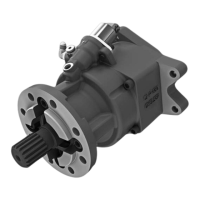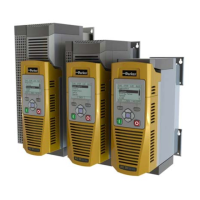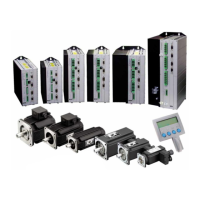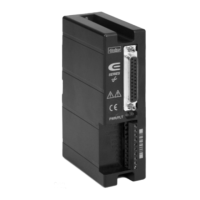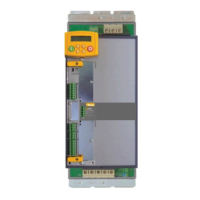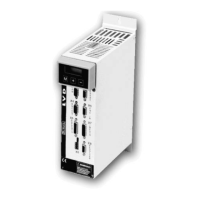Programming D-91
DC590+ Series DC Digital Drive
Functional Description
The following block diagram shows the internal structure of the PID block.
PID is used to control the response of any closed loop system. It is used specifically
in system applications involving the control of drives to allow zero steady state error
between Reference and Feedback, together with good transient performance.
The block executes a Proportional Gain + Integral + Derivative control algorithm,
with an added filter to attenuate high-frequency noise. You can select P, PD, PI or
PID as required.
Proportional Gain (PROP. GAIN)
This is used to adjust the basic response of the closed loop control system.
It is defined as the portion of the loop gain fed back to make the complete
control loop stable. The PID error is multiplied by the Proportional Gain to
produce an output.
Integral (INT. TIME CONST.)
The Integral term is used to give zero steady state error between the
setpoint and feedback values of the PID. If the integral is set to a small
value, this will cause an underdamped or unstable control system.
Derivative (DERIVATIVE TC)
This is used to correct for certain types of control loop instability, and
therefore improve response. It is sometimes used when heavy or large
inertia rolls are being controlled. The derivative term has an associated filter to suppress high frequency signals.
The algorithm modifies the error between the setpoint and the feedback with the proportional, integral, and derivative terms. The error is clamped
internally to ±105% maximum.
The proportional, integral, and derivative terms are scaled by PROP. GAIN, INT. TIME CONST., and DERIVATIVE TC respectively. An additional
gain profiler can modify the proportional gain as the roll diameter changes. The block diagram shows how the proportional gain changes when using
the profiler.
Proportional Gain
Proportional gain scales the output based upon the input error. Increasing PROP. GAIN will improve the response time while increasing overshoot.
MODE selects the proportional gain profile. When set to 0, the proportional gain remains constant over the entire roll. Changing the value of MODE
increases the profile as shown opposite.
You should try to achieve a critically damped response which allows the mechanics to track as precisely as possible a step change on the setpoint.
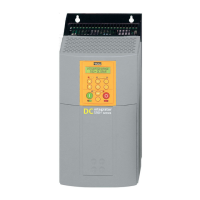
